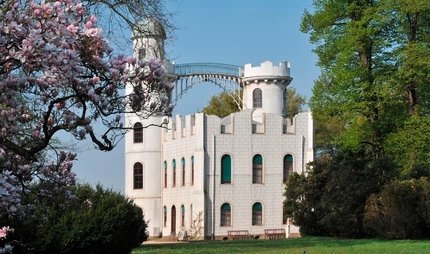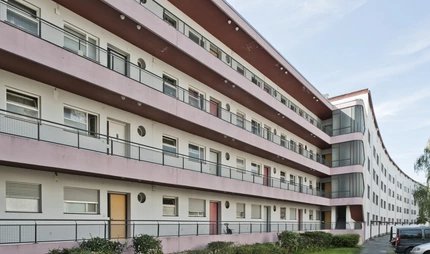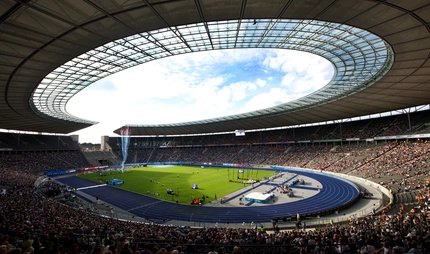
The Corbusier House (Unité d'Habitation) in Berlin
New housing against the housing shortage of the 1950s
New buildings in Berlin were intended to eliminate the great shortage of housing in the post-war period. In 1953, numerous renowned international architects took part in the international building exhibition (InterBau). The Swiss architect Le Corbusier was also there and provided the design for a large housing complex near the Olympic Stadium.
nternational architects such as Oscar Niemeyer, Arne Jakobsen, Alvar Aalto, Pierre Vago and Walter Gropius took part in Interbau 1953 with their designs. The new residential buildings were intended to revive the ideas and building tradition of the 1920s.
the Unités d'habitation - UNESCO World Heritage Site
The Franco-Swiss architect Le Corbusier had already built his Unités d'habitation, complex housing units, in Marseille (1947-1952) and in Nantes-Rezé (1953-1955). At the Interbau in Berlin, he presented the design for a new Unité d'habitation, type Berlin. Due to the size of the new housing complex, the site was chosen on a small hill near the Olympic Stadium on the edge of Grunewald. The Berlin type of unités d'habitation is stylistically considered closely related to the housing complex in Marseille.
Le Corbusier's entire oeuvre of 17 buildings has World Heritage status - extraordinary that transnational entries appear on the UNESCO World Heritage List.
530 new flats at the Olympic Stadium
The construction phase for the Berlin residential complex stretched from 1956 to 1958. The 52.94-metre-high, 141.20-metre-long, 22.96-metre-wide high-rise has 530 flats with one to five rooms. In 1979 it became condominiums. In addition to a large shop on the ground floor, there is the wash house, which serves as a cinema, or the association flat, which is used for exhibitions, among other things. In 2004, the Förderverein Corbusierhaus Berlin e. V. was founded, which organises cultural and scientific events in addition to maintaining and caring for the communal facilities. For those interested in architecture, guided tours give a comprehensive insight into the listed building and the park. Furthermore, the history of the building, the construction and the life of Corbusier are described.



